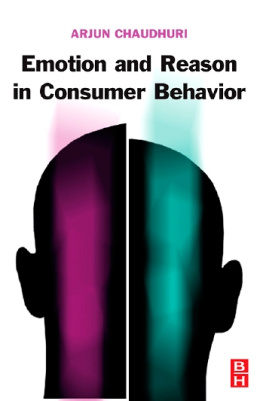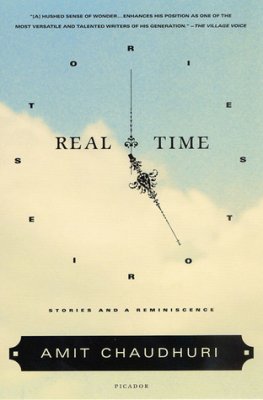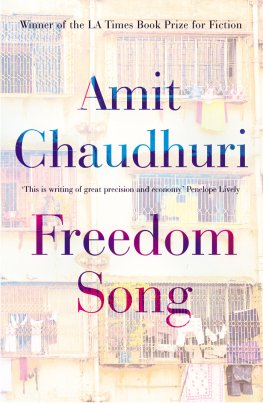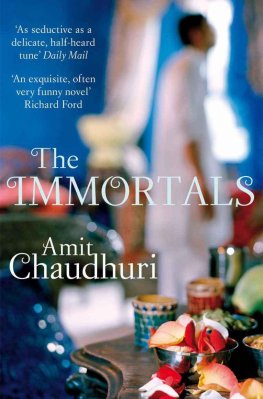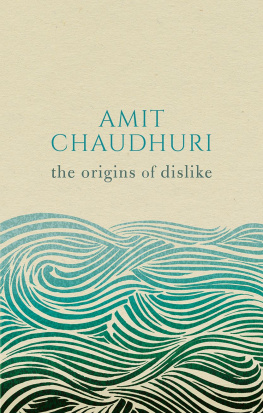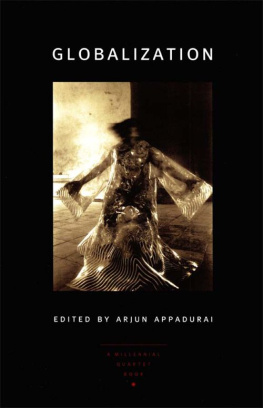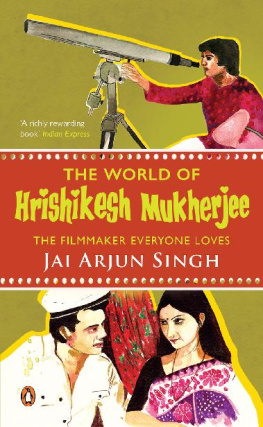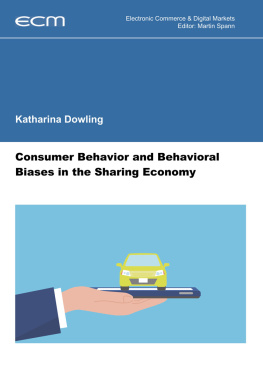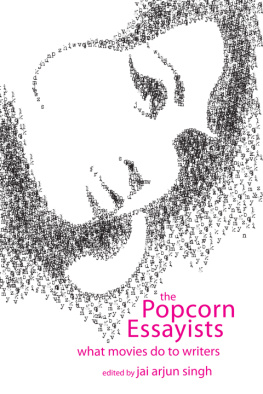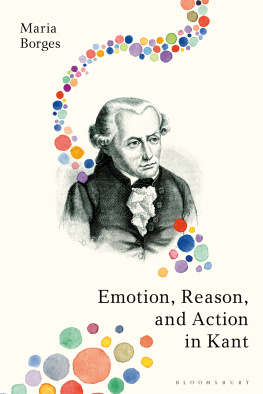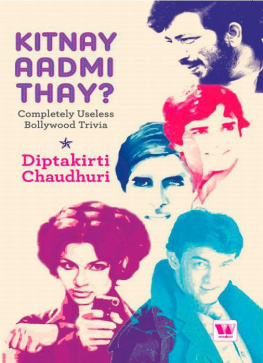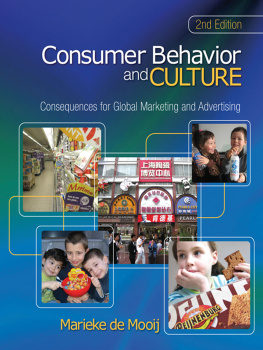Arjun Chaudhuri - Emotion and Reason in Consumer Behavior
Here you can read online Arjun Chaudhuri - Emotion and Reason in Consumer Behavior full text of the book (entire story) in english for free. Download pdf and epub, get meaning, cover and reviews about this ebook. year: 2006, publisher: Butterworth-Heinemann, Elsevier, genre: Romance novel. Description of the work, (preface) as well as reviews are available. Best literature library LitArk.com created for fans of good reading and offers a wide selection of genres:
Romance novel
Science fiction
Adventure
Detective
Science
History
Home and family
Prose
Art
Politics
Computer
Non-fiction
Religion
Business
Children
Humor
Choose a favorite category and find really read worthwhile books. Enjoy immersion in the world of imagination, feel the emotions of the characters or learn something new for yourself, make an fascinating discovery.
- Book:Emotion and Reason in Consumer Behavior
- Author:
- Publisher:Butterworth-Heinemann, Elsevier
- Genre:
- Year:2006
- Rating:3 / 5
- Favourites:Add to favourites
- Your mark:
- 60
- 1
- 2
- 3
- 4
- 5
Emotion and Reason in Consumer Behavior: summary, description and annotation
We offer to read an annotation, description, summary or preface (depends on what the author of the book "Emotion and Reason in Consumer Behavior" wrote himself). If you haven't found the necessary information about the book — write in the comments, we will try to find it.
Emotion and Reason in Consumer Behavior — read online for free the complete book (whole text) full work
Below is the text of the book, divided by pages. System saving the place of the last page read, allows you to conveniently read the book "Emotion and Reason in Consumer Behavior" online for free, without having to search again every time where you left off. Put a bookmark, and you can go to the page where you finished reading at any time.
Font size:
Interval:
Bookmark:
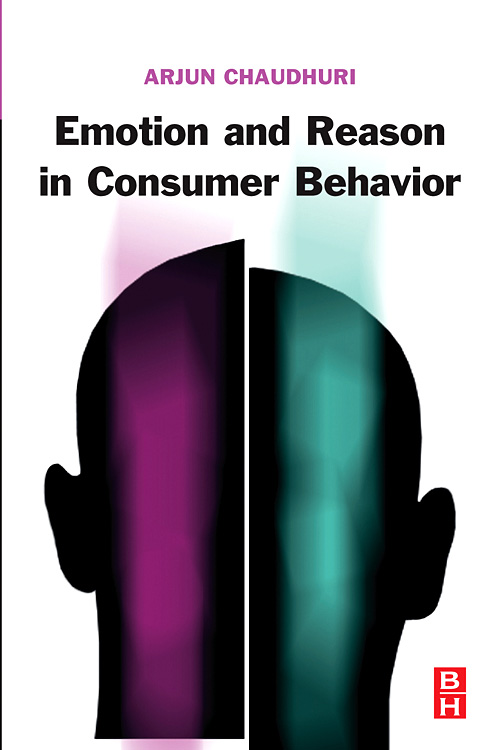
This Page is Intentionally Left Blan k
Fairfield Uni v ersity

AMSTERDAM BOSTON HEIDELBERG LONDO N NEW YORK OXFORD PARIS SAN DIEG O SAN FRANCISCO SINGAPORE SYDNEY TOKY O Butterworth-Heinemann is an imprint of Elsevie r


Butterworth-Heinemann is an imprint of Elsevier 30 Corporate Drive, Suite 400, Burlington, MA 01803, USA Linacre House, Jordan Hill, Oxford OX2 8DP, UK
Copyright 2006, Elsevier Inc. All rights reserved.
No part of this publication may be reproduced, stored in a retrieval system, or transmitted in any form or by any means, electronic, mechanical, photocopying, recording, or otherwise, without the prior written permission of the publisher.
Permissions may be sought directly from Elseviers Science & Technology Rights Department in Oxford, UK: phone: (+44) 1865 843830, fax: (+44) 1865 853333, E-mail: permissions@elsevier.com. You may also complete your request on-line via the Elsevier homepage (http://elsevier.com), by selecting Support & Contact then Copyright and Permission and then Obtaining Permissions.
Recognizing the importance of preserving what has been written, Elsevier prints its books on acid-free paper whenever possible.
Library of Congress Cataloging-in-Publication Data
Chaudhuri, Arjun. Emotion and reason in consumer behavior / Arjun Chaudhuri.
p. cm . Includes bibliographical references and index . ISBN 0-7506-7976-X (alk. paper )
Consumer behavior. 2. Consumer behaviorPsychological aspects. I. Title.
HF5415.32.C45 2005 658.8342dc22 2005052084
British Library Cataloguing-in-Publication Data
A catalogue record for this book is available from the British Library.
ISBN 13: 978-0-7506-7976-3 ISBN 10: 0-7506-7976-X
For information on all Academic Press publications visit our Web site at www.books.elsevier.com
Printed in the United States of America 050607080910 10987654321

This book is fo r my wife, Kathleen , and my mother, Nilima .
This Page is Intentionally Left Blan k
FOREWORD ix AUTHORS NOTE xiii
1 INTRODUCTION 1 2 EMOTION AND REASON 25 3 ATTITUDE FORMATION 39 4 INVOLVEMENT 55 5 THEORIES OF LEARNING 71 6 PERSONALITY AND THE SELF 91 7RISK103 8 TRUST AND COMMITMENT 115 9 VALUE 133
REFERENCES 149 INDEX 159
This Page is Intentionally Left Blan k
Department of Communication Sciences and Psychology Uni v ersity of Connecticut, Storrs
Emotion and Reason in Consumer Beha v ior is a pioneering book, among the first if not the first to apply systematic emotion theory and measure ment techniques to the analysis of consumer behavior. I am confident that it will not be the last. Emotion was long a difficult notion in the social and behavioral sciences because of the perceived difficulty of measuring one of its core components: subjective experience. Behaviorists almost entirely eschewed the concept of emotion because it appeared to be impossible to objectively measure and verify subjective experiences because they appear essentially to be private events. B. F. Skinner (1953) acknowledged that private events may be distinguished by limited accessibility but not, so far as we know, by any special structure or nature (p. 257). Presciently, Skinner also noted, the line between public and private is not fixed. The boundary shifts with every discovery of a technique for making private events public.... The problem of privacy may, therefore, eventually be solved by technical advances (p. 282). With the coming of the cognitive revolution, emotions came to be seen as disturbances that occur when cog nitive processing is disrupted (Miller, Galanter, & Pribram, 1960; Simon, 1967). However, subjective experience per se was seen as private and unobservable, and self-report measures of emotional experience were sus pect because they could not be objectively confirmed.
When the study of emotion began to gain scientific respectability beginning in the late 1960s, it was its objectively observable display and
FOREWORD
communicative aspects rather than its experiential aspects that were emphasized. An important sign of this rebirth was the work of Paul Ekman, E. R. Sorenson, and Wallace Friesen, published in Science (1969), which demonstrated that the posed facial expressions of Westerners can accurately be interpreted by isolated Fore tribespeople in highland New Guinea, and that the Fores expressions could be interpreted by Americans. Similarly, the work of Robert E. Miller showed that normal rhesus monkeys can demonstrate accurate spontaneous emotional com munication, which can, however, be disrupted by such factors as early iso lation and certain psychoactive drugs (Miller, Caul, & Mirsky, 1967).
The Developmental-Interactionist theory of emotion stemmed from my work with Miller, applying his techniques for measuring spontaneous emotional communication to human beings (Buck, 1976, 1984). The theory viewed affect and reason as interacting in a developmental context. It saw emotion as an aspect of a filter that responds quickly to events prior to complex information processing, and indeed emotion was seen to alter and guide higher-order processing. This kind of conceptualization received important support in the work of Joseph LeDoux (1996), who demon strated that the brain responds to affective events in two ways: with a fast but relatively undifferentiated low road system involving emotion mech anisms in the subcortical and old-cortical parts of the brain, and with a slower but more differentiated high road involving new-cortical mecha nisms. The low road information functions to quickly command atten tion and physiological arousal, and to stimulate reflexive action; the high road modulates the low road reaction and initiates goal-oriented coping behaviors. So, when you are startled by your playful roommate, the initial low road emotional response is quickly followed by relief that it is just your roommate playing a trick.
Recent studies have used technical advances that actually do give a measure of accessibility to otherwise private events as Skinner (1953) had suggested. This includes functional magnetic resonance imagingthe fMRIthat by mapping blood flow determines which parts of the brain are activated. For example, Arthur Aron, Helen Fisher, Lucy Brown, and colleagues (2005) recently showed that pictures of a loved one shown to persons in a state of acute romantic love activate subcortical reward areas including the right ventral tegmental area and dorsal caudate. Importantly, Aron stated in a June 2005 press release that the strong relationships demonstrated in this research between self-reported romantic love and specific brain activity dramatically increase our confidence that self-report questionnaires can actually measure brain activity. Another recent study illustrates that basic neurochemicals can induce complex behavior patterns in human beings. Kosfeld et al. (2005) showed that the simple administration of the neurohormone oxytocinlinked to nurturance in animalsincreases the trust that people have in strangers.
Font size:
Interval:
Bookmark:
Similar books «Emotion and Reason in Consumer Behavior»
Look at similar books to Emotion and Reason in Consumer Behavior. We have selected literature similar in name and meaning in the hope of providing readers with more options to find new, interesting, not yet read works.
Discussion, reviews of the book Emotion and Reason in Consumer Behavior and just readers' own opinions. Leave your comments, write what you think about the work, its meaning or the main characters. Specify what exactly you liked and what you didn't like, and why you think so.

